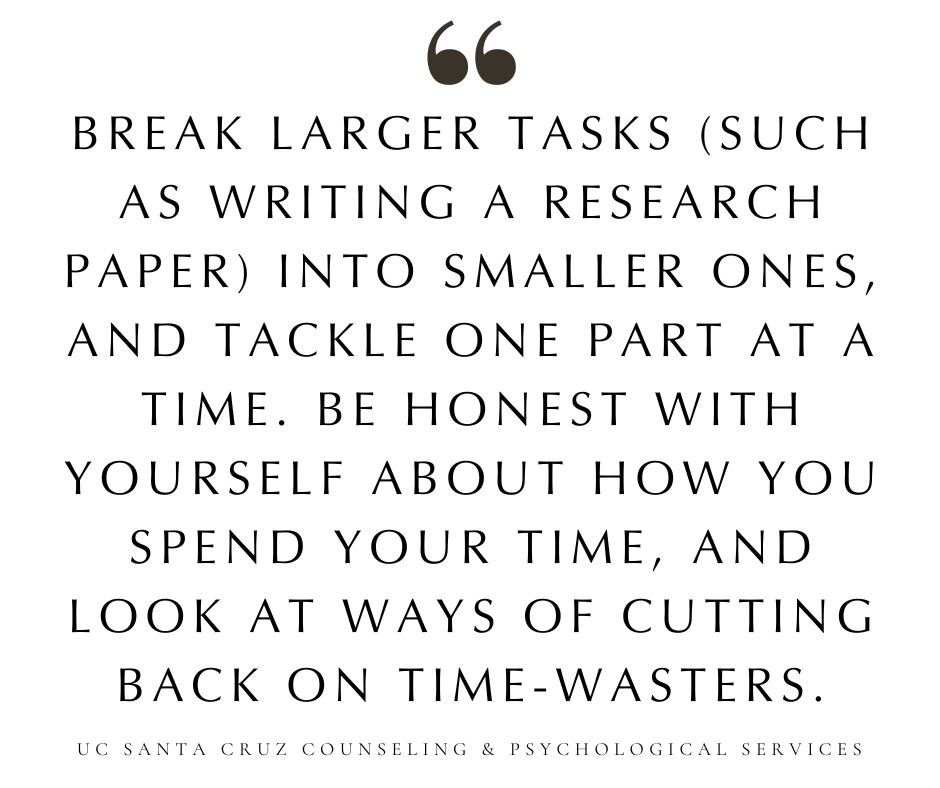

Time Management Strategies for the Procrastinators Among Us
Summary
This article provides comprehensive time management strategies specifically tailored for procrastinators, with an emphasis on the unique challenges faced by women in creative careers. It delves into understanding procrastination’s causes, like fear of failure and lack of motivation, and outlines the consequences of prolonged procrastination, such as missed deadlines and personal dissatisfaction. To combat procrastination, the article suggests practical strategies such as setting realistic goals, prioritizing tasks, creating a structured schedule, eliminating distractions, saying no and setting boundaries, leveraging technology wisely, and practicing self-care. It highlights the importance of breaking tasks into manageable chunks, using time-tracking tools for productivity, and the role of continuous improvement and self-compassion in overcoming setbacks. The article underscores that effectively managing time not only enhances productivity and work-life balance but also empowers individuals to reclaim control over their schedules and achieve greater personal and professional fulfillment.
Reflection Questions
- Reflect on the past month. Can you identify specific instances or patterns of procrastination in your professional or personal life? What were the underlying reasons—fear of failure, perfectionism, lack of motivation?
- Think about a recent project or task that was significantly delayed due to procrastination. How did this affect your stress levels, relationships with colleagues, or personal life?
- Consider your current goals. Are they specific, measurable, achievable, relevant, and time-bound (SMART)? How might revising these goals into smaller, actionable steps help you overcome procrastination?
Journal Prompt
Reflect on a recent situation where procrastination impacted your ability to achieve a personal or professional goal. Describe the circumstances that led to procrastination, including any emotional or psychological factors involved. Analyze the consequences of delaying this task or project, both immediate and long-term. Based on the strategies outlined in the article, develop a personalized action plan to address and overcome these procrastination patterns. Consider setting specific, achievable goals, creating a structured schedule, minimizing distractions, and integrating self-care practices into your routine. Reflect on how you can apply these strategies consistently to improve your time management skills and achieve a better work-life balance. Lastly, think about the role of self-compassion and patience in your journey towards overcoming procrastination and enhancing productivity.
Procrastination is a common hurdle many of us face when navigating our long list of daily tasks. Whether it’s putting off important assignments until the last minute or delaying personal goals, procrastination affects people across all walks of life. However, time management strategies can offer a lifeline to those grappling with this challenge.
For women in creative careers, the pressure to balance professional responsibilities with personal obligations can exacerbate time management struggles. Recognizing these unique challenges is crucial in crafting effective time management tools tailored to meet diverse needs. By acknowledging the prevalence of procrastination and addressing the specific hurdles faced by women, time management solutions can be developed to empower individuals to reclaim control over their schedules and achieve greater productivity.
Understanding Procrastination


Procrastination is like that sneaky little gremlin that whispers in your ear—telling you it’s totally okay to put off doing what you need to do right now. It’s like having a to-do list as long as a CVS receipt but deciding to binge-watch a new series instead. It’s that feeling of, “I’ll do it later,” which often turns into, “Oops, I should have done that yesterday!” Procrastination is the ultimate enemy of productivity, but hey, we’ve all been there at some point, right?
Common causes include fear of failure, perfectionism, lack of motivation, and poor self-regulation. These factors can contribute to a vicious cycle of avoidance, where individuals continually put off tasks despite knowing the consequences.
Sometimes, we put off tasks because we’re scared we won’t do them perfectly. You might even hear “If I don’t start, I can’t fail, right?” before launching into a new project. When a task feels overwhelming or just plain boring, it’s easy to push it to the bottom of the to-do list. I mean, who wants to do taxes when you could be watching the latest design show on Netflix?
With notifications buzzing left and right, it’s hard to focus on anything for more than five minutes without getting pulled into the endless scroll of social media. Ever find yourself saying, “I’ll just do it later” and then suddenly it’s 2 AM and you’re wondering where the day went?
Consequences of Prolonged Procrastination


But as we all know, the impact of procrastination extends beyond mere inconvenience. It can significantly disrupt both work and personal life. In professional settings, delayed projects can lead to missed deadlines, increased stress levels, and strained relationships with colleagues or clients.
One consequence of procrastination is the loss of free time. Instead of enjoying moments of relaxation or pursuing personal interests, individuals may find themselves scrambling to complete overdue tasks. This lack of time management can also lead to stress and burnout, as deadlines loom large and project progress stagnates.
Moreover, procrastination can hinder project performance. When tasks are delayed, project managers struggle to track projects effectively and assess project progress accurately. It becomes challenging to break down large goals into manageable tasks and ensure that completed tasks align with scheduled time frames.
In personal endeavors, procrastination can hinder progress toward goals, leading to feelings of frustration and dissatisfaction. However, addressing procrastination involves more than simply implementing time management strategies. It requires a deeper understanding of underlying triggers and the development of effective coping mechanisms.
Incorporating time management tools such as time-tracking software or project management features can provide insights into time spent on tasks and help individuals prioritize urgent tasks more effectively. By cultivating strong time management skills and utilizing appropriate time management tools, individuals can break free from the grip of procrastination and regain control over their schedules and productivity.
Time Management Strategies for Women with Creative Careers
Setting Realistic Goals


Procrastinators often set unrealistic goals, leading to disappointment and further procrastination. Set small, achievable goals for each day or week. Celebrate your progress, no matter how small, to stay motivated.
Often, we might have a vague idea of what we want to achieve but lack clarity on the specifics. Without clear objectives, it’s difficult to set realistic goals. Sometimes, we overestimate our abilities or the resources available to us. This can lead to setting goals that are too ambitious or unrealistic given our current circumstances.
Society, peers, or even our expectations can pressure us into setting goals that may not align with our true desires or capabilities. Setting realistic goals requires careful planning and consideration of the steps needed to achieve them. Without proper planning, goals can seem overwhelming or unattainable.
We may have multiple competing goals or desires, making it challenging to prioritize and focus on setting realistic goals that are achievable within a reasonable timeframe. Sometimes, we might not have a clear understanding of our own strengths, weaknesses, and limitations. This can lead to setting goals that are either too easy or too difficult for us to accomplish.
Setting realistic goals is a crucial aspect of any effective time management strategy. When it comes to managing your time efficiently, it’s essential to break down your objectives into manageable tasks and set time limits for each.
Embracing the SMART framework—ensuring goals are Specific, Measurable, Achievable, Relevant, and Time-bound—provides a solid foundation for success. Breaking down larger tasks into manageable chunks not only makes them less daunting but also facilitates a sense of progress and accomplishment along the way.
Prioritizing Tasks


Not all tasks are created equal. Prioritize your tasks based on urgency and importance. Focus on completing the most critical tasks first, then move on to less important ones.
Prioritizing tasks is another essential aspect of time management, where techniques like the Eisenhower Box or the 80/20 rule can be invaluable. These methods help distinguish between urgent and important tasks, ensuring that efforts are directed towards activities that yield the greatest impact.
To track work hours and save time, setting time limits for each activity can be immensely helpful. This ensures that you devote an appropriate amount of time to each task without letting it overrun your day. Additionally, incorporating daily tasks and repetitive tasks into your routine can streamline your workflow, freeing up more time for other endeavors.
Creating a Structured Schedule


Creating a structured schedule is key to optimizing productivity. Designing a daily routine that balances work, personal time, and breaks fosters a healthy work-life balance. Utilizing digital calendars and planners can streamline scheduling and ensure tasks are completed in a timely manner.
Utilizing a mobile device or other time management tools can facilitate the scheduling process, enabling users to access their schedules on the go and make adjustments as needed. With a structured schedule in place, individuals can focus on one task at a time without feeling overwhelmed by competing demands. This approach promotes better concentration and allows for more meaningful work to be completed.
Eliminating Distractions


As a procrastinator, eliminating distractions can be key to boosting productivity. Identifying common distractions and implementing strategies to minimize their impact can significantly improve efficiency.
Understand what distracts you the most. Is it social media, emails, noisy environments, or something else? Once you know your distractions, you can work on minimizing or eliminating them.
Experiment with different time management techniques to find what works best for you. Whether it’s the Pomodoro Technique, time blocking, or using productivity apps, find a method that helps you stay focused and on track.
Fuel your creative fire & be a part of a supportive community that values how you love to live.
subscribe to our newsletter
*please check your Spam folder for the latest DesignDash Magazine issue immediately after subscription


Designate a specific workspace that is free from distractions. This might involve finding a quiet area, turning off notifications on your devices, or using tools like noise-canceling headphones. Communicate with others about your need for focus time. Let family members, roommates, or colleagues know when you’re working and ask for their support in minimizing interruptions during those times.
One of the most effective strategies for time management is the concept of focus sessions. By dedicating a set period to work on a particular task without distractions, you can maximize productivity and efficiency. Utilizing a task manager to organize your workload and monitor project performance can further enhance your time management efforts.
There are also many apps and tools available to help eliminate distractions and increase focus. Consider using website blockers, task management apps, or browser extensions that limit your access to distracting sites during work periods.
Saying No and Setting Boundaries


Saying no and setting boundaries is essential for safeguarding valuable work time. Establishing clear boundaries with colleagues, friends, and family helps protect against interruptions and maintain focus on important tasks.
By knowing what’s most important to you, whether it’s work, family, personal growth, or leisure time, you can make more informed decisions about where to invest your time and energy. This clarity enables you to say no to activities or requests that don’t align with your priorities, freeing up space for what truly matters.
Surround yourself with supportive friends, family, or colleagues who can help keep you accountable. Share your goals with them and ask for their encouragement and support when needed. Communication plays a crucial role in effective boundary-setting and saying no. It’s essential to communicate your boundaries clearly and assertively, while also being respectful of others’ needs and perspectives. This might involve politely declining invitations, delegating tasks, or renegotiating deadlines to better align with your priorities and capacity. By communicating openly and honestly, you can build stronger relationships based on mutual respect and understanding.
Ultimately, saying no and setting boundaries is a skill that requires practice and self-awareness. It’s about advocating for yourself and taking control of your time and commitments, rather than allowing external pressures to dictate your schedule. By mastering this skill, you can cultivate a more balanced and fulfilling life where your time is spent in alignment with your values and goals.
Leveraging Technology — But Not Too Much!


Leveraging technology can greatly enhance time management efforts. Utilizing apps and tools for productivity, focus, and accurate time tracking reports can provide valuable insights and streamline workflow.
Time management tools can assist in setting and achieving realistic goals. These platforms allow you to create custom time reports and track project progress effortlessly.
With features like automatic tracking of work hours and time-powerful reporting, you can gain valuable insights into your project performance and identify areas for improvement. Additionally, by breaking down larger projects into smaller, more manageable tasks, you can maintain focus and momentum, leading to increased productivity.
Project management software and time tracker apps offer features such as creating invoices, scheduling meetings, and budgeting, while user-friendly interfaces make them accessible to all team members. Furthermore, a project manager can use time management tools to track project tasks and billing clients accurately. By recording all the data related to a particular task, including completed tasks and work hours, they can provide unlimited users with comprehensive insights into project progress and time usage. This not only helps streamline operations but also enhances transparency and accountability within the team.
For professionals who bill clients based on time spent on projects, accurate time management is essential for billing clients fairly and maintaining trust. By adhering to scheduled time and prioritizing tasks effectively, you can optimize your time management skills and make the most of your most precious resource – time.
Practicing Self-Care


Be kind to yourself, especially when facing setbacks. It’s easy to fall into self-criticism and negative self-talk, but this only fuels procrastination. Instead, practice self-compassion and remind yourself that setbacks are a natural part of the journey.
Practicing self-care is integral to sustaining productivity in the long term. Recognizing the role of self-care in preventing burnout and reducing stress is essential. Incorporating activities that promote well-being and rejuvenation into daily routines ensures individuals can operate at their best.
This might include engaging in physical exercise, such as going for a walk or practicing yoga, to relieve stress and boost energy levels. Regular exercise not only enhances overall well-being but also improves focus and productivity, making it a valuable addition to any time management routine.
In addition to physical activity, taking breaks throughout the day is crucial for mental refreshment. Whether it’s enjoying a cup of tea, meditating for a few minutes, or simply stepping away from your workstation, giving yourself permission to pause and recharge can prevent fatigue and enhance time management efficiency in the long run.
Make self-care a priority by scheduling time for it in your daily or weekly routine. Whether it’s taking a long bath, going for a walk, or simply sitting quietly with a cup of tea, carve out time for activities that nourish your mind, body, and soul.
Incorporate mindfulness practices into your daily routine to help you stay present and reduce stress. This could include meditation, deep breathing exercises, or simply taking a few moments to focus on the sensations of the present moment.
Furthermore, prioritizing adequate sleep is paramount for cognitive function and productivity. By establishing a consistent sleep schedule and ensuring that you get enough rest each night, you’ll be better equipped to tackle daily tasks with clarity and focus.
Implementing these Strategies


Integrating time management strategies into daily routines requires a combination of intentionality and adaptability. To effectively tackle your objectives, it’s crucial to break them down into bite-sized tasks that are easier to handle. By breaking down your larger goals into smaller, more manageable components, you’ll find it easier to make progress and stay focused.
Once you’ve broken them down, it’s essential to prioritize them based on their significance and urgency. This ensures that you’re dedicating your time and energy to the most critical aspects first. Additionally, setting SMART goals—ones that are Specific, Measurable, Achievable, Relevant, and Time-bound—can greatly enhance your ability to turn your aspirations into tangible accomplishments. With SMART goals in place, you’ll have a clear roadmap for action and a higher likelihood of success.
One effective approach is to incorporate these strategies gradually, starting with small adjustments and gradually building momentum over time. For example, setting aside a few minutes each morning to review priorities and plan the day can establish a solid foundation for time management. Utilizing time management tools such as task management apps or time tracking software can streamline this process and provide valuable insights into how time is allocated throughout the day.
One of the fundamental aspects of effective time management is accurate time tracking. Utilizing tools and software designed for this purpose can provide individuals with valuable insights into how they allocate their time. Whether it’s through a dedicated time management system or project management apps, tracking time allows individuals to identify areas where they can improve efficiency and productivity. Additionally, it enables them to generate billable hours and create invoices for clients, ensuring that they are compensated fairly for their work.
For those working in teams, team management software can be invaluable for coordinating efforts and ensuring that everyone is on the same page. These tools often include features such as assigned tasks and scheduled meetings, making it easier to delegate responsibilities and collaborate effectively. Moreover, integrating budgeting and a user-friendly interface can streamline processes and enhance overall productivity.
Incorporating the best time management tools into one’s workflow can further enhance efficiency. From Google Calendar for scheduling to-do lists and reminders, to project management apps that help automate repetitive tasks, these tools offer a wide range of functionalities to suit various needs. By leveraging these tools effectively, individuals can optimize their workflow and make the most of their time.
Overcoming Setbacks


Dealing with lapses back into procrastination can be frustrating, but it’s important to approach setbacks with patience and self-compassion. When facing challenges in maintaining effective time management strategies, it’s essential to reflect on the factors that may have contributed to the lapse. Sometimes, unforeseen circumstances or overwhelming workloads can derail even the most organized individuals. In such situations, it’s helpful to reassess priorities and adjust schedules accordingly.
The first step is to acknowledge that setbacks happen and accept them as part of the process. It’s natural to face hurdles, but what matters is how you respond to them. Take some time to reflect on what caused the setback. Was it poor time management, unexpected circumstances, or simply procrastination? Identify the root cause so you can learn from it and prevent it from happening again in the future.
When faced with a setback, the task at hand might seem daunting. Break it down into smaller, manageable chunks. This makes it easier to tackle and reduces the feeling of overwhelm, which often leads to procrastination.
Be Comfortable with Continuous Improvement
Continuous improvement is key to overcoming setbacks and building efficient time management habits. Instead of dwelling on past mistakes, it’s important to focus on learning from them and identifying areas for improvement. This may involve experimenting with different time management strategies or exploring new time management tools to find the right fit for specific tasks and workflows.
Be Kind to Yourself
Encouraging self-forgiveness is also crucial in the process of overcoming setbacks. It’s natural to experience setbacks and occasional lapses in productivity, but dwelling on past mistakes only hinders progress. By practicing self-compassion and acknowledging that setbacks are a normal part of the learning process, individuals can maintain a positive mindset and stay motivated to continue improving.
Stay Flexible and Celebrate Progress
Despite your best efforts, setbacks may still occur. Stay flexible and be willing to adapt your plans as needed. Remember that it’s okay to change course if it means moving closer to your goals. Finally, celebrate your progress, no matter how small. Recognize your achievements and use them as fuel to keep pushing forward. Overcoming setbacks is a testament to your resilience and determination.
Final Thoughts on Beating the Desire to Procrastinate


For women navigating the demands of both professional responsibilities and personal obligations, embracing effective time management strategies is essential. By utilizing a combination of time management tools and techniques, such as track time software and prioritization methods, women can maximize productivity and better balance their various commitments.
Incorporating tools like integrated payment gateways or to-do lists can further streamline workflows and ensure that tasks are completed efficiently. The key lies in finding the right time management tool that aligns with individual needs and preferences, empowering women to take control of their schedules and make the most of their time.
Overcoming procrastination is often a significant challenge, but it’s not insurmountable. By implementing strategies such as breaking tasks into manageable chunks and setting SMART goals, individuals can combat procrastination and stay focused on their objectives. Embracing time management strategies also involves recognizing the importance of downtime and self-care. Allocating time for relaxation and pursuing activities outside of work not only enhances well-being but also boosts overall productivity in the long run.
Ultimately, the key to success lies in tracking time spent on tasks, both professionally and personally. By utilizing time-tracking tools and project management software, individuals can efficiently manage tasks, track progress, and make informed decisions about how to allocate their time effectively. Whether it’s in the workplace or in personal life, implementing time management strategies enables women to juggle their various responsibilities with confidence, ensuring that they can achieve their goals and thrive in all aspects of their lives.
By Armela E.
Design Dash
Join us in designing a life you love.
-
What is Tax-Loss Harvesting, Is It Legal, and Does It Build Wealth?
A legal and simple strategy, tax-loss harvesting helps you offset capital gains and grow your wealth by reducing your tax bill.
-
DesignDash Guide: Create the Ultimate Fall Capsule Wardrobe
Build a fall capsule wardrobe to streamline your style, save time, and support sustainability with versatile, high-quality pieces.
-
How to Support a Partner Who is Making a Major Career Change
Wondering how to be a supportive partner during periods of transition? Here’s how to care for your partner (and yourself) during this time.
-
How Dollar-Cost Averaging Can Help You Navigate Market Volatility
Learn how dollar-cost averaging (DCA) can help you grow your wealth with consistency and ease, even during market volatility.
-
Fall Meal Prep: Maximizing Space for Soups, Stews, and Bakes
From decluttering your pantry to creating a cozy prep station you’ll actually enjoy, here’s how to organize your kitchen for fall meal prep.
-
Looking to the Future? Maybe It’s Time to Refresh Your Firm’s Brand
Your interior design business shouldn’t have to rebrand every time you open a new studio or add a new service, but it might need a brand refresh.








